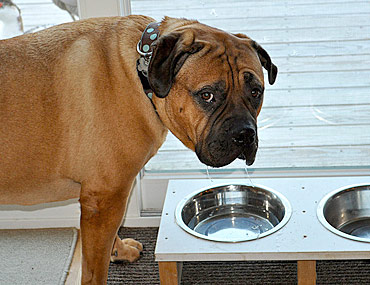Overview
Let’s face it. Dogs like to play—and with play sometimes comes scrapes and cuts. Most often, minor cuts and scrapes are kept clean by your pooch. They lick them and care for them as they heal. Sometimes, that is not enough and an abscess can occur because bacteria set in, infecting the wound.
Symptoms
Abscesses can be found anywhere on your pooch. They often look like a swollen lump, are sensitive or painful to the touch, and can develop a bad odor. There may be a discharge of pus from the site. Your dog may stop eating or may act lethargic or depressed, which are all signs of a fever.
 Diagnosis/Treatment
Diagnosis/Treatment
Abscesses can be very serious if left untreated. The abscess should be lanced, drained, and cleaned (which will require local or general anesthesia). And because an abscess is an infection, your dog will need antibiotics and possibly pain-relief medications.
If your dog must undergo anesthesia to have the abscess drained and cleaned, your veterinarian may also recommend preanesthetic tests to ensure that your pet is healthy and can tolerate the anesthetic procedure.
These may include:
- Chemistry tests to evaluate kidney, liver, and pancreatic function, as well as sugar levels
- A complete blood count (CBC) to rule out blood-related conditions
- Electrolyte tests to ensure your dog isn’t dehydrated or suffering from an electrolyte imbalance
Prevention
The best way to prevent your dog from getting an abscess is to check her daily for wounds. If you notice a cut or wound, contact your veterinarian staff so they can advise you regarding the best treatment for your canine friend.




















